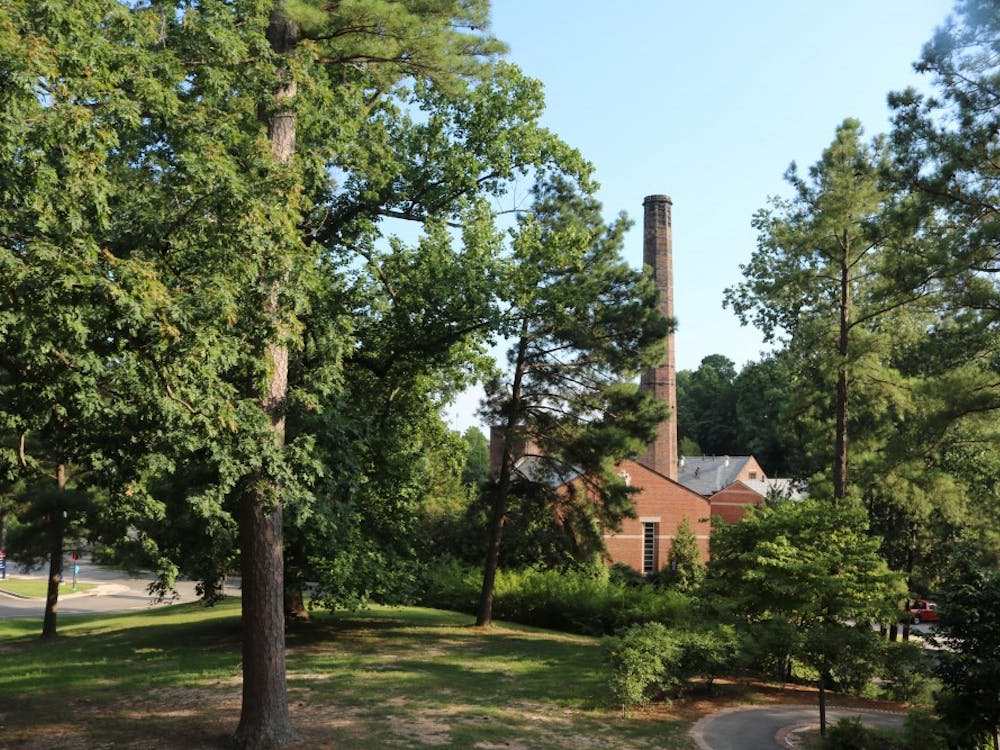Biology professor Carrie Wu has worked with her students to advance her research on a dangerous invasive species, Phragmites australis, which has influenced the Virginia Department of Recreation and Conservation's procedures.
Their work is also in the process of being published and will be featured in a National Public Radio program.
"I guess the main reason that we should be studying them is for the ecological impact they have," said freshman Amanda Moore, a biology major and psychology minor. "Phragmites specifically, because it grows so rapidly, taking over the diversity of marshes. It's important we understand that and are able to make different conservation efforts, so they're controlled."
After recognizing the threat of Phragmites, the Virginia Department of Conservation and Recreation started using controlled burns and chemical sprays to stop it from spreading.
But Phragmites is prone to catch fire, and unlike other plants, it can re-sprout even when the top burns off, she said. Although these methods contain the species, they probably cannot eradicate a Phragmites population because even a small nodule can reestablish itself, Wu said. This adaptation also creates a fire hazard, she said.
Wu's research shows that native Phragmites still exists in Virginia, a finding that she has integrated into her class, "Biological Invasions." Because native Phragmites does not pose the same threats as the non-native, or invasive Phragmites, Wu focuses largely on how to differentiate between the two, she said.
Wu and her students have brought this idea to the department's attention. Before working together, the department applied its controlled methods to Phragmites populations without identifying whether they were actually invasive, she said.
"We're bringing in a genetic tool to more definitely determine where native and invasive populations are," she said, "so that they can target the invasive and try to conserve the native."
Wu's students have focused on distinguishing the populations genetically, rather than morphologically, or by looking solely at their physical appearance, Wu said.
Phragmites is a tall wetland grass in both forms, but often, native and non-native species look and behave differently, she said.
The native species usually grows in wetlands, coexisting with other species. Invasive Phragmites grows into a hedge about six to 10 feet tall. These hedges live in isolation because they have a more aggressive growth form, she said.
This invasive strand is similar to the strawberry plant in that it can spread rhizomes, or underground stems, but it is also similar to bamboo in that it grows more densely, she said. This allows the plant to become a monoculture, forming tight meshes and crowding out other plants, Wu said. The non-native Phragmites take over the area, transforming the watershed community.
Enjoy what you're reading?
Signup for our newsletter
These habitats are often left unsuitable for other animals and plants that occupy it, decreasing the habitat's diversity. Phragmites poses a threat to birds that use these wetlands as nesting sites, and to some fish species, she said. Invasive Phragmites also raises the soil level, weakening the wetland's ability to act as a filter, Wu said.
Because invasive Phragmites originated in the Mediterranean, it has no natural predators in Virginia or in other Chesapeake Bay areas, making them difficult to contain, Wu said.
Wu's students focus less on the solution to containment, and more on the distinction between the native and invasive plants, she said.
"It's basically just a class about invasive species." Freshman Carol Guzman said, "How they come and fare, interacting with native species, and the ecology of it all."
The main project is the lab, which centers on Wu's research, said sophomore Laura Murray, majoring in biochemistry and Latin American and Iberian studies.
The students conducted their lab at Bethel Beach Natural Area Preserve, Moore said, where a department representative, who had worked with Wu, explained how to conserve different species.
Each group collected 10 species of Phragmites, Guzman said. The students used crushed leaves to get the plant into DNA form, Moore said, which they had put into a gel. If the sample had shown a single-band pattern, it was native, and a double-band pattern if non-native, she said.
The students found that many more samples were invasive, Guzman said, which had shown that the native species had been declining.
Not only did they identify the strands of different populations, but also where the strands could potentially spread, Moore said.
Although Wu has been at the university for four years, she did not begin teaching the class until last fall. As a field biologist, Wu uses genetics to ask questions about populations' locations within their environment. She then goes out into the field and collects organisms to bring into the lab, she said.
She wanted to bring this component into one of her classes, she said, so she had talked to local residents and asked if there was a need to address an invasive species within the community.
Contact staff reporter Jamie Edelen at jamie.edelen@richmond.edu
Support independent student media
You can make a tax-deductible donation by clicking the button below, which takes you to our secure PayPal account. The page is set up to receive contributions in whatever amount you designate. We look forward to using the money we raise to further our mission of providing honest and accurate information to students, faculty, staff, alumni and others in the general public.
Donate Now


